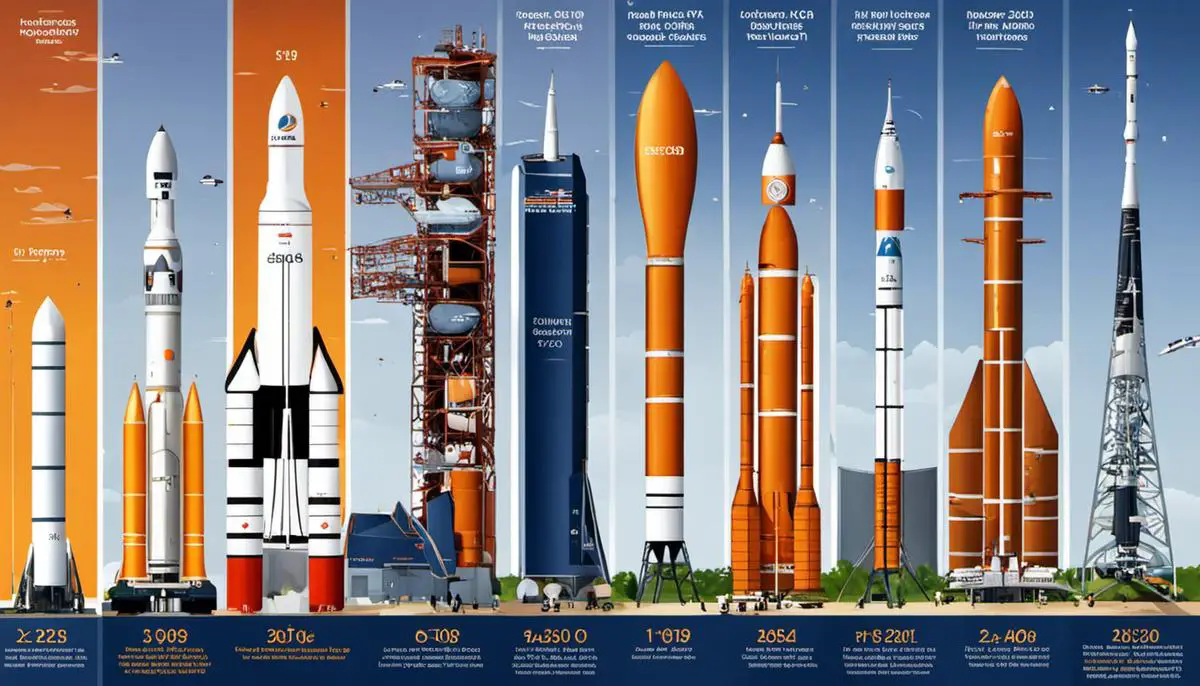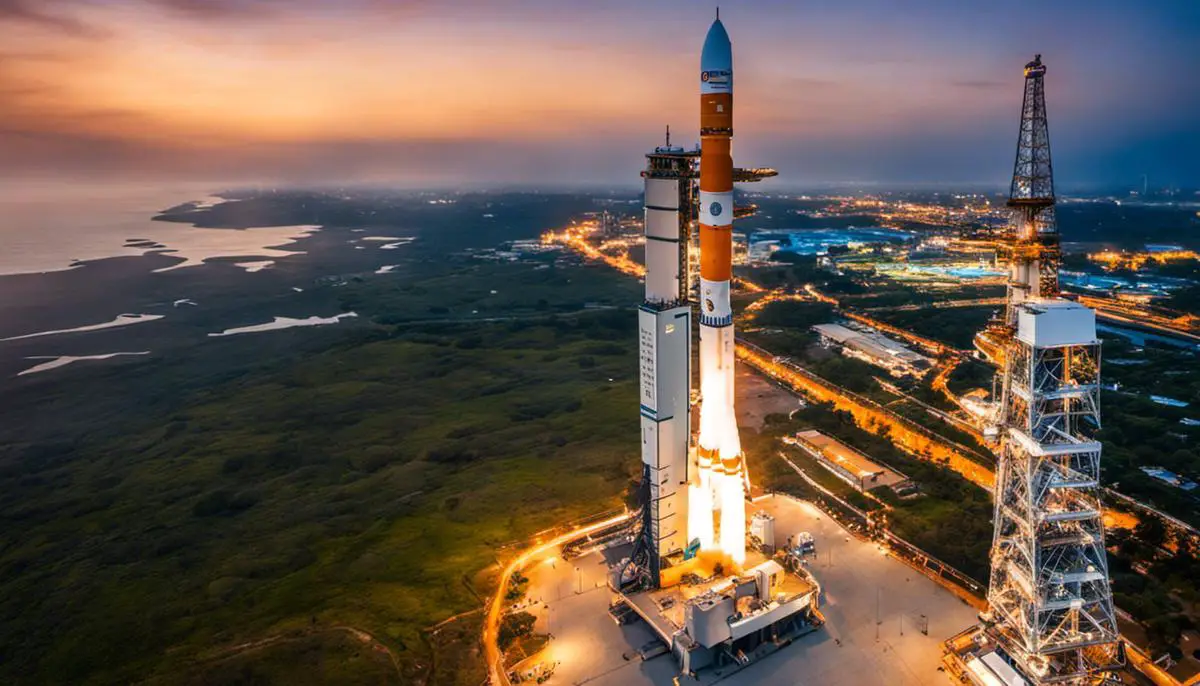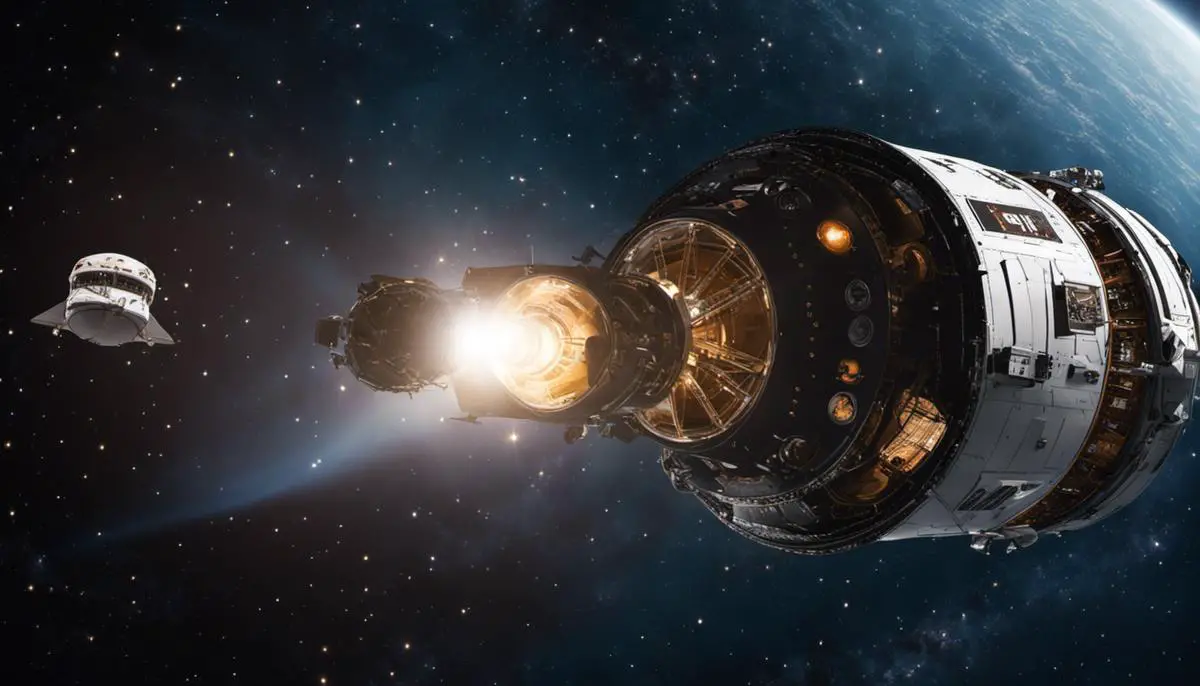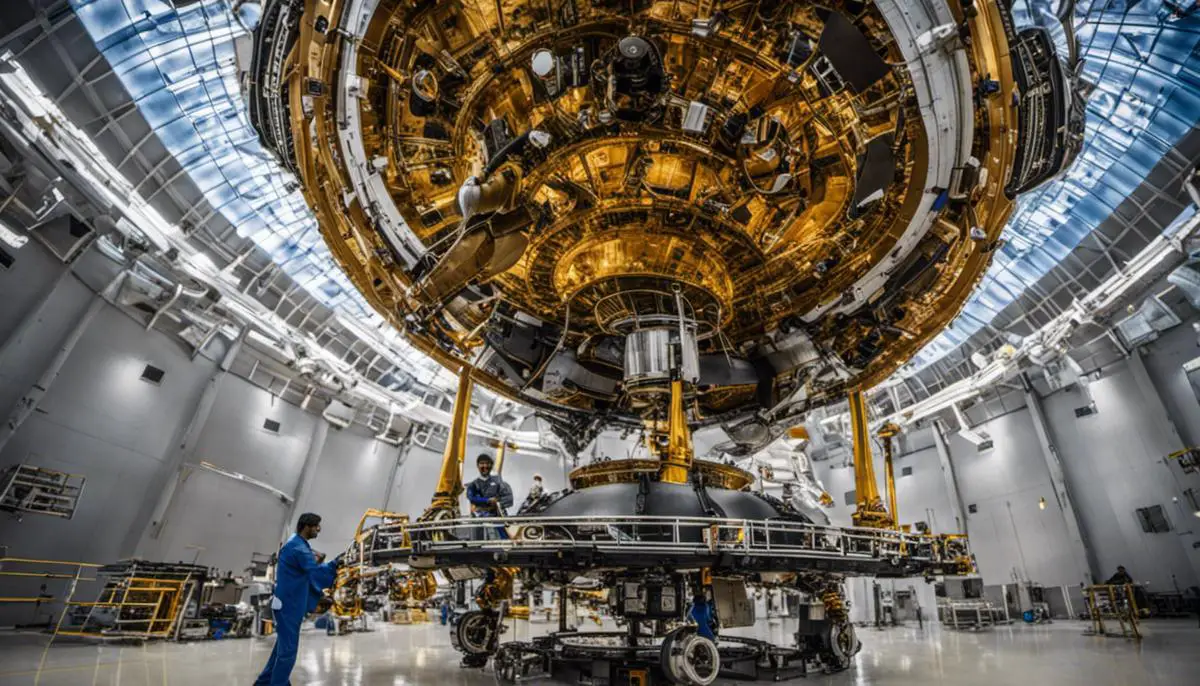India’s significant strides in space exploration have launched it into a realm of supreme scientific innovation, setting it apart as a global space powerhouse. This exploration seeks to delve into the continuous advancements and achievements of the Indian Space Research Organisation (ISRO). We shall sail through the journey of ISRO’s establishment, the evolution of its mandate and the development of its globally recognized stature. Advancements in satellite launch vehicle technology, significant satellite launches and their applications, and landmark missions like Chandrayaan and Mangalyaan will also be illuminated. As we navigate through this engrossing narrative of the great Indian space voyage, we will also try to predict future endeavors and the challenges that India’s space program may confront.
Contents
The Emergence of Indian Space Research Organisation (ISRO)
Title: The Evolutionary Journey: Unraveling ISRO’s Ascendancy to its Current Position in Space Technology
The burgeoning sector of space technology and exploration, once primarily the playground of superpower nations, has metamorphosed to encompass a diverse array of global participants. In particular, the Indian Space Research Organization (ISRO), initially formed merely as a national space agency, has refined its strategies, triumphed over numerous odds, and strategically positioned itself as a significant figure in current space technology on the global stage.
Incepted in 1969, ISRO emerged from humble beginnings under the leadership of visionary physicist Dr. Vikram Sarabhai with an initial focus on harnessing space technology for societal benefits. However, the enormous potential projected by the space frontier gradually stimulated ISRO to broaden its horizons beyond domestic welfare, propelling India into the global space arena.
Initially, ISRO had to contend with numerous financial constraints, technological insecurities, and limited resources, causing it to rely heavily on foreign assistance for technology and expertise. However, these limitations did not stem ISRO’s progress. On the contrary, they fueled a drive towards self-reliance, innovation, and extreme cost efficiency. A crucial turning point came in 1980 when India successfully launched its first satellite, the Rohini, into space using its own launch vehicle, the Satellite Launch Vehicle-3 (SLV-3). Thus marked the beginning of ISRO’s journey into self-sufficiency.
The subsequent period was characterized by increased investments in research and development, resulting in a proliferation of indigenous technologies. The successful development and operationalization of the Polar Satellite Launch Vehicle (PSLV) and the Geosynchronous Satellite Launch Vehicle (GSLV) represented a significant escalation in ISRO’s technological prowess.
Notably, ISRO’s approach to low-cost, efficient, and innovative solutions has consistently secured its position in the cutting-edge space technology arena. The Mangalyaan Mission, India’s momentous maiden voyage to Mars in 2014, which was executed on a remarkably lean budget, stands as a testament to this fact. This mission catapulted India into an elite group of nations capable of interplanetary missions and accentuated its credible presence among global space agencies.
ISRO’s achievements are not merely confined to space explorations; it has made significant strides in contributing to various sectors such as communication, meteorology, disaster management, navigation, and resource monitoring through its sophisticated satellite systems. For instance, the Indian Regional Navigation Satellite System (IRNSS) was devised in response to India’s demand for a reliable independent navigational system.
Further, ISRO has steadily established collaborative relations with several international space agencies, further amplifying its influence and contribution to global space technology. These partnerships have allowed for sharing of knowledge, expertise, resources, and enabled global missions like the NISAR (NASA-ISRO Synthetic Aperture Radar), heralding a new era of international cooperation in space.
Ultimately, the evolutionary journey of ISRO constitutes a compelling narrative of resilience, innovation, and strategic growth. Bound by financial restraints and technological deficiencies, what was once an underdog in space technology has emerged as a distinct global player demonstrating the influencing force of determination, innovation, and astute strategic planning.

India’s Launch Vehicle Technology
Advancements in India’s Launch Vehicle Technology: A Trajectory of Persistence and Innovation
India’s launch vehicle technology has experienced considerable progression since its inception. Building on the foundational establishments of ISRO, the expertise and innovation from scientists have fermented into profound and impressive technological advancements. Herein is a contemplation of the soaring trajectory of India’s launch vehicle technology.
The focus shifts from the rudimentary beginnings to the progressive phases of ISRO’s advancement. Underscored is the central role of the launch vehicles, acting as the heart and muscle of space exploration. Observations denote that technological advancement didn’t occur linearly, but rather as a result of dedicated and focused research, innovation, and resiliency, underpinned by the parties’ rigorous commitment to the objective of self-reliance.
During the early development stages, India’s launch vehicle technology was relatively elementary, demonstrating only the potential for the greatness to come. The launch of the Satellite Launch Vehicle (SLV)-3 in 1980, served as India’s first launch vehicle, and a stepping stone towards more advanced technology. Indeed, SLV-3 laid the groundwork for the advancement of the Augmented Satellite Launch Vehicle (ASLV), instrumental in improving orbital placement capabilities and understanding the environment of space flight.
The expansion of India’s launch vehicle prowess was marked by the development of the Polar Satellite Launch Vehicle (PSLV) in the 1990s. Technological advancements allowed the PSLV to become a reliable and versatile player in the launch vehicle arena. The PSLV became a crucial component of India’s space capability, acting as the workhorse launch system for the nation. Moreover, the PSLV’s propulsive pitch maneuver laid a foundation for future missions, such as the Chandrayaan-1 lunar probe, marking an important milestone in the history of Indian space exploration.
Following the successful operationalization of the PSLV was the inauguration of the powerful vehicle, the Geosynchronous Satellite Launch Vehicle (GSLV). Utilizing an indigenously developed cryogenic engine, the GSLV matched technology available to the international space community. The development and successful deployment of GSLV-Mark III, often referred to as India’s “fat boy”, was a significant stride. This heavy-lift launch vehicle has been developed with an intention to carry heavier payloads, up to 4,000 kilograms to GTO, signifying a quantum leap in India’s launch vehicle technology.
Mutually beneficial international collaborations marked another dimension in India’s space technology journey. Noteworthy is the collaboration with Russia in the 1990s for the development of cryogenic technology. While the agreement encountered obstacles, India’s resilience resulted in the development of an indigenous cryogenic engine, propelling India’s standing in the space technological sphere.
India’s foray into reusable launch vehicle technology is also a testament to the nation’s advancements. The successful launch of the winged-body experimental Reusable Launch Vehicle-Technology Demonstrator (RLV-TD) in 2016 showcased India’s step towards developing a Two Stage to Orbit (TSTO) fully reusable vehicle. Stepping stone to such technological prowess was inherent in the integrated activities carried out by ISRO, demonstrated by the nation’s progression from standard launching to mastering the art of controlled reentry, in-orbit operations, and recovery.
Amalgamating the past and present, the transformation in India’s launch vehicle technology is evident. The foundation of this progression thrived on a drive towards self-reliance, continuous research and development, and innovative solutions. This reflects not only ISRO’s mission-centric ethos but also its devoted passion for space research and technology. The trajectory of these advancements depicts the potential for an illustrious future, wherein India stands as a formidable entity in the world of space exploration.

Key Satellites and their Applications
Building upon this robust foundation of the Indian Space Research Organization (ISRO), the focus now shifts toward some of the key satellites launched by this world-renowned agency. Not just simple technological feats, these satellites reflect ISRO’s vision, embodying a powerful tool for societal development and progress.
One of the watershed moments in India’s space exploration saga arrived in 1975 with the launch of Aryabhata, the country’s first satellite. Named after an acclaimed ancient Indian mathematician, the Aryabhata satellite marked a critical leap in indigenous development. Predominantly serving experimental purposes, the Aryabhata collected invaluable data regarding X-Ray astronomy and solar neutrons, paving the way for future advancements.
Highlighting one of ISRO’s chief trajectories, the Indian Regional Navigational Satellite System (IRNSS), named NAVIC (Navigation with Indian Constellation), is worth noting. With an operational name inspired by the Hindi word for ‘sailor’ or ‘navigator’, this is India’s independent regional navigation satellite system. Placed in geosynchronous orbits, it offers significant position information services to users across India and the surrounding region, thereby reducing reliance on foreign navigation systems.
Another paramount rocket in India’s satellite portfolio is the Indian Remote Sensing (IRS) Satellite system. Initiated in 1988, the IRS system heralded a new era in the country’s resource management and environmental assessment initiatives. From agricultural applications and water resources to urban planning and coastal studies – the reach of IRS has been transformative, providing critical data to fuel India’s development in diverse sectors.
Apart from societal applications, ISRO also made considerable strides in astrophysics research. ASTROSAT, India’s first multi-wavelength space telescope launched in 2015, exemplifies the country’s prowess in unveiling cosmic mysteries. By observing the universe in the visible, Ultraviolet (UV), and limited X-ray spectra, ASTROSAT has significantly contributed to understanding celestial phenomena.
Launched in 2018, the GSAT-7A is another key satellite underpinning India’s strategic communication capabilities in the aerospace sector. Operating in the Ku-band, this advanced communication satellite boosts network-centric warfare capabilities by connecting all bases of the Indian Air force and enhancing drone operations.
While these represent pioneering strides in India’s space exploration, ISRO’s most ambitious venture undoubtedly is the Mars Orbiter Mission (MOM), or Mangalyaan. With its successful launch in 2013, India became the first country to reach Mars in its maiden attempt. Beyond the scientific objectives of studying Mars’ surface, atmospheric processes, and mineralogy, MOM enhanced India’s stature in interplanetary exploration.
These satellites, each subsequent one dwarfing its predecessor’s technological prowess, have significantly impacted India’s development. In various capacities, these high-tech marvels have enhanced communication, bolstered national defense, powered research and development, and facilitated resource management. Bridging the frontier between science and society, they lie at the heart of India’s surging growth story, echoing ISRO’s mantra of space technology as a catalyst for sustainable development.
Indeed, the enduring journey of ISRO offers potent testimony to the power of imaginative thinking, scientific inquiry, and resilient dedication when it comes to transforming a nation’s destiny. Even as ISRO embarks on newer missions to explore the uncharted realms of the cosmos, it remains rooted in its vision of harnessing space technology for national development. From the legacy of Aryabhata to the momentous Mangalyaan, the saga of India’s satellite advancement continues to unravel, stirring equal measures of pride and promise.

Significant Missions: Chandrayaan and Mangalyaan
The Chandrayaan and Mangalyaan missions have significantly bolstered India’s space exploration capabilities, marking the nation’s arrival on the global space stage. In addition to boosting national morale, these missions underlined the ability of the ISRO to deliver complex missions with remarkable cost-effectiveness and the aptitude for intricate, deep-space explorations that expand human knowledge about interplanetary bodies.
Initiated in 2008, the Chandrayaan-1 mission heralded India’s entre into lunar exploration, a massive leap from its traditional applications-focused space program. Equipped with eleven scientific instruments aboard, it went on to provide critical insights into lunar mineralogy and topography. Its greatest achievement has been the discovery of water on the lunar surface, underscoring the mission’s scientific importance.
The subsequent Chandrayaan-2 mission was an even more ambitious undertaking, involving a lander and rover. Though the lander Vikram was unable to make a successful landing, the mission’s orbiter, equipped with eight scientific instruments, continues to function optimally. By examining the polar region, believed to contain water ice, the orbiter furthers our understanding of the moon’s environment, adding to the compendium of knowledge that could enable future manned missions.
The Mangalyaan mission, also known as the Mars Orbiter Mission (MOM), punctuated India’s prowess, demonstrating the adept ability to reach Martian orbit on its maiden attempt. Launched in 2013, MOM defied odds, operating beyond its stipulated mission life and is still providing vital data. Outfitted with five scientific instruments, it aims to explore Mars’s surface features, morphology, mineralogy, and atmosphere. The mission made a significant contribution to understanding Mars, and the success of this interplanetary endeavor further reinforced ISRO’s prominence in the global space community.
The Chandrayaan and Mangalyaan missions have effectively underscored India’s space exploration capabilities, cementing its place in the international space research arena. Notwithstanding the remarkable achievement in terms of technological advancement and scientific discovery, the missions also manifested a willingness to accept risks and tackle unchartered territories. These missions encapsulate India’s increasing space ambitions, setting the stage for more sophisticated projects in the future such as an ambitious solar mission (Aditya-L1), the Human Spaceflight Program (Gaganyaan), and further Martian and Venusian missions.
Thus, beyond the immediate sphere of national pride and prestige, the impact of the Chandrayaan and Mangalyaan missions reinforce the value of space exploration as humanity’s collective venture. Costs and risks associated notwithstanding, the pursuit of space exploration panache stands central to developing multi-dimensional capacities – increased scientific understanding, enhanced technology development, and greater strategic influence.

Future Endeavors and Challenges for India’s Space Program
Emerging as a global player in the realm of space exploration, India harbors grand ambitions, cradling important missions such as the projected launch of Gaganyaan—a manned orbital spacecraft—expected to occur in late 2022 or early 2023. If accomplished, India will join the exclusive club of nations including Russia, the United States and China—countries that have independently sent humans to space.
ISRO’s planned lunar exploration—Chandrayaan-3—also testifies to the nation’s steadfast pursuit of space science. Building upon the significant strides of its predecessors, this endeavor aims to perfect the shortcomings of Chandrayaan-2. Propelled by the ultimate goal of landing an Indian rover on the moon, this mission serves as a stepping-stone towards achieving a deeper level of lunar understanding. It will also set the ground for further interplanetary missions, underpinning ISRO’s commitment to trailblazing the frontiers of space exploration.
Looming on the horizon is the mission Aditya-L1, slated for launch in 2022. Far from a conventional space exploration mission, its target isn’t another planet, but our very own star, the Sun. Stationed at Sun-Earth Lagrange point 1, it seeks to comprehensively study the Sun’s corona—an essential endeavor to gain valuable insights into solar physics, given the Sun’s pivotal role in shaping terrestrial climate and satellite communication systems.
However, India’s space endeavors do not come without their own sets of challenges. Topical among them is the need for a robust regulatory and legal structure. With growing space activities, it becomes inevitable to strengthen policies that not only align with international space law but also create an encouraging environment for public-private partnerships—critical to fueling innovation and competition.
Additionally, tending to space debris and sustainability is an escalating concern, given the increasing congestion in Earth’s orbit. According to the European Space Agency, there are currently over 34,000 pieces of space debris larger than 10cm, posing potential risks to satellite and space missions. Therefore, it is paramount to develop and adopt technologies for space debris detection, tracking, and mitigation.
Finally, the issue of funding demands attention. Although ISRO’s frugality has been admirable, ambitious plans such as a manned mission or interplanetary exploration require generous resource allocation. Thus, financial hurdles necessitate exploring alternative funding options—be it foreign direct investment, public-private partnerships, or strengthening the indigenous space industry for global competitiveness.
Conclusively, India stands at the precipice of expanding exploration, overcoming herculean challenges, and marching towards carving out a distinctive niche in the annals of space history. Through a balanced approach of pragmatism, technical prowess, and a culture of innovation, ISRO demonstrates to the world that space is indeed the final frontier, where dreams are interwoven with reality.

India’s space exploration journey is a testimony to human resilience, ingenuity, and the tireless pursuit of knowledge. From the nascent beginnings with launch vehicles to exploring Mars, the country’s space odyssey stands unparalleled. ISRO’s evolution resonates with India’s booming growth narrative and futuristic aspirations. India’s space journey not only encapsulates technological progress but also unravels significant socio-economic benefits fostering national security, disaster management and economic development. As the nation braces itself for more daring missions and scientific pursuits, the challenges of sustainable funding, managing space debris, and nurturing cutting-edge technological competence also loom larger. This remarkable journey of India’s space exploration underlines the nation’s potential to spearhead future global space endeavors and fosters anticipation of the great leaps it will make in the universe.
